Ensuring Code Readiness at Summerlin Hospital
Customer Story

Customer Story

Summerlin Hospital Medical Center in Las Vegas, NV used high-fidelity simulation training to optimize their code response, strengthening team performance under pressure.
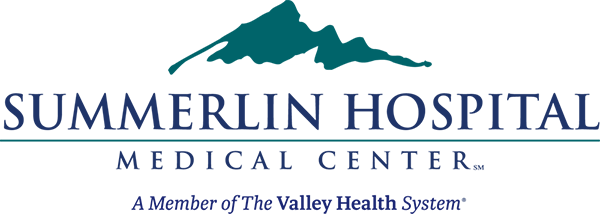
Summerlin Hospital Medical Center is a 485-bed, Joint Commission-accredited hospital that provides quality healthcare to the residents of Summerlin, NV, and the Las Vegas area.
The Challenge
Jennifer Inocencio, MSN-Ed, BSN, NPD-BC, Manager, Staff Development at Summerlin Hospital Medical Center (SHMC) in Las Vegas, NV knows the importance of providing staff with realistic, hands-on training opportunities through simulation.
As a nurse educator with a former background in academia, Jennifer had worked in simulation labs that used high-fidelity simulation to create true-to-life training experiences. When she started her career at Summerlin Hospital, managing education for all service lines, she quickly saw a need for similar high-fidelity experiences at the hospital.
At that time, the staff were actively engaged in practicing mock codes using a CPR manikin torso. The manikin allowed the staff to get a hands-on approach to practicing critical skills. However, there were some tasks that needed to be verbalized because they couldn’t be performed on the manikin. This included using live electricity, pushing epi, and collecting vital signs. Jennifer recognized the potential for enhancing the training experience even further.
"In thinking about adult learners, and how we actually learn – very specifically in nursing – we're very tactile," she explains. "We like to actually do things."
- Jennifer Inocencio, MSN-Ed, BSN, NPD-BC
Manager, Staff Development at Summerlin Hospital

The Solution
Jennifer started advocating for a high-fidelity simulator that would allow for the realistic learning opportunities she knew were crucial.
She wrote a justification letter explaining the importance of having a high-fidelity manikin that could replicate real life without leaving anything to the imagination. With persistence and determination, the justification was successfully approved after a few attempts.
She knew she wanted a manikin that would facilitate the most lifelike training possible. This meant being able to conduct in situ simulations, or simulations that take place outside the sim lab in the real work environment.
When she was in academia, she worked with Laerdal simulators. She decided to choose SimMan® ALS for SHMC. This simulator would allow for comprehensive simulation scenarios, covering everything from basic assessments to advanced life support. It would enable clinical applications in airway management, cardiac care, vascular procedures, circulation diagnostics, and therapeutic skills, making it versatile for use in any location.
SimMan ALS would work with SimPad® PLUS, a handheld device that captures and provides performance data for debriefing after scenarios. The data would include an event log and metrics on compression rate, depth, and ventilation. This was especially important to Jennifer because it would allow her to review CPR performance with the staff in real-time instead of relying on the instructor’s observation.
Once she received the SimMan, she decided to name him Riley Rescue.
She decided to start the new mock codes in med-surg, which had the highest number of new graduate nurses. She knew that they would be the most likely of all the staff to have recent experience with simulation and be more comfortable with it. And, she recognized that these new nurses could especially benefit from the training to build their confidence and competence in their transition to practice.
"It’s overwhelming," she says. “There’s a lot of emotional stress already placed on a new nurse that's caring for this patient. And then you’re thrown into a life-or-death situation where this patient is relying on you to act."
"And sometimes, in those moments, we freeze," she adds. "We don’t know what to do. This is where the repetitive, tactile experience [is crucial]. As adult learners, we think back to past experiences. [We remember,] 'Okay, I’ve done this at least once before.'"
The Results
Together with the new simulator Riley, Jennifer started conducting mock codes in numerous areas, from the storage room to the staff kitchen. During the codes, new graduate nurses and other staff practiced working together as a high-performance team.
Using this high-fidelity approach to building code preparedness, Jennifer and her team saw some remarkable results in multiple areas:
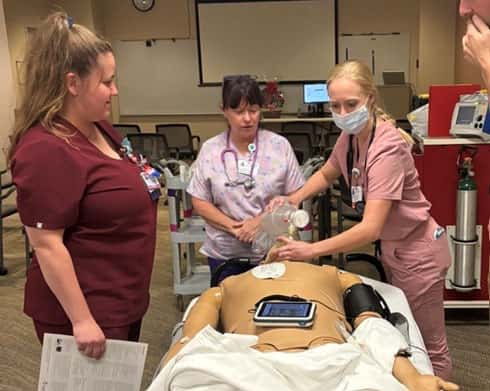
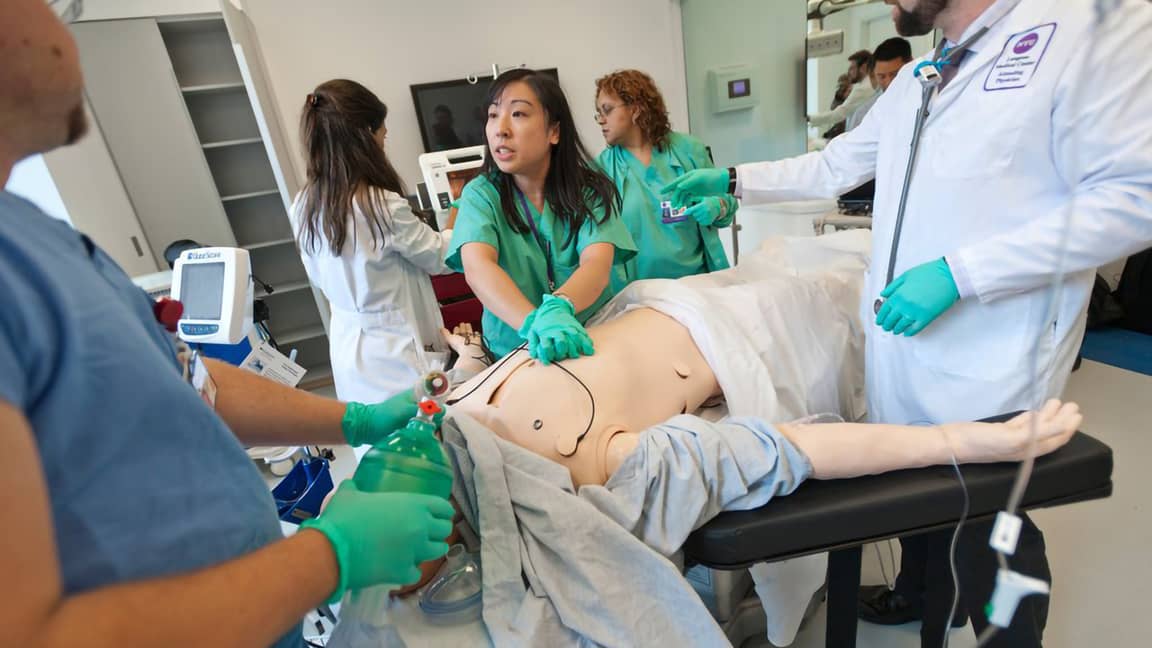
Running the codes provided staff, especially the new graduate nurses, with crucial opportunities to feel prepared for a high-stress situation they don’t often encounter.
Staff have often told Jennifer that they felt ready to respond during real codes because of the mock codes. "I hear it all the time," she shares. "And I [tell them], 'This is why we do what we do.'"
The staff mastered key teamwork concepts like knowing their roles and practicing closed-loop communication. In many cases, the staff noticed that using these concepts resulted in a calm, quiet room – and not the chaos that often ensues during codes.
This shared mental model, or "getting everyone on the same page," is well-known as an important element of successful teamwork and collaboration in healthcare.*
Since the mock codes have been implemented, Summerlin Hospital has seen a lower ICU census. There has been a higher rate of rapid response calls and a lower rate of code blues – with the majority of the code blues resulting in ROSC. This data suggests that the nurses have been recognizing deteriorating patients sooner, in many cases preventing code blues from occurring.
Running in situ simulations means training in the real environment, using real equipment. For many hospitals, training in the actual environment results in the ability to catch and mitigate system issues known as latent safety threats. These "accidents waiting to happen" aren’t immediately apparent and can make it easier for healthcare providers to make errors.
Summerlin Hospital’s in situ simulations uncovered latent safety threats related to knowledge gaps in using the defibrillator – a common issue in hospitals. Because defibrillators aren't used often, maintaining competency becomes a challenge. Once Jennifer uncovered the knowledge gaps, she made sure the team could practice and get comfortable using the defibrillator.
Since starting the mock codes, Summerlin Hospital has seen an improvement in its nurse retention rates. Jennifer attributes some of this to simulation’s ability to give nurses the confidence and competence that they crave.
"When I hear that the nurses are not scared...those are big wins for me, especially [with] new grads," she says.
The nurses have even been found to catch latent safety threats. "I’m hearing more and more, 'Our new grad caught this, our new grad caught that.,'" she says. "It’s huge. They’re catching things and escalating [them.]"
The SimMan ALS paired with the SimPad PLUS provided essential performance data that helped Jennifer in multiple ways:

The objective performance data highlighted areas where the staff could refine their team performance. The data was eye-opening – because before running the mock codes, they weren't aware of these opportunities for improvement.
"When I pulled up the report for the first mock code...it just blew everybody’s minds, from our leadership to our house supervisors," she marvels.
"With nurses, with adult learners, we have to know the ‘why,’” she says. "With the data, I’ve been able to show the 'why.' Why do we practice? This is why. We want to believe that we are all doing our best. We come here to make a difference and to save lives. We're going to do whatever we need to do to our best abilities. Sometimes we fall short, but we don't even recognize it."
"Now, I’m bringing that data in front of you to show you that we have room for improvement, and we can do it," she says. "And with that, ever since I’ve been showing them their own data, I don’t get pushback. Because they see it as value."
At Summerlin Hospital, staff maintain competence in their individual CPR skills using the Resuscitation Quality Improvement (RQI®) program. As part of this program, they practice CPR on a quarterly basis using a Voice-Assisted Manikin (VAM). The VAM provides real-time feedback and coaching on CPR performance as they practice.
When comparing performance data from RQI alongside performance data from the SimPad used during mock codes, Jennifer noticed that the providers' CPR skills were better during their RQI practice. She realized that this was due to VAM that was coaching them through the process in real time.
Having this data helped emphasize the importance using a coach during code trainings to help the providers practice high-quality CPR. Now, the code nurse or team lead provides coaching to help achieve better results.
Jennifer wanted to showcase Riley and the impact they were seeing with this training method. She also wanted to increase the use of simulation training throughout the entire hospital system.
She decided to work with her Laerdal Territory Manager, Brent Adams, to put together a simulation open house. They would have Riley on display there, along with other simulation solutions for pediatrics, maternity, and more. The event would be the first of its kind across the healthcare system.
A total of 143 hospital employees, including 5 C-suite leaders, attended from four different campuses. The C-suite leaders heard directly from managers and directors from Pediatrics, Maternity, Critical Care, and ED about all the ways simulation could help. The CEO and CNO also shared their pain points and learned how they could be addressed through simulation.
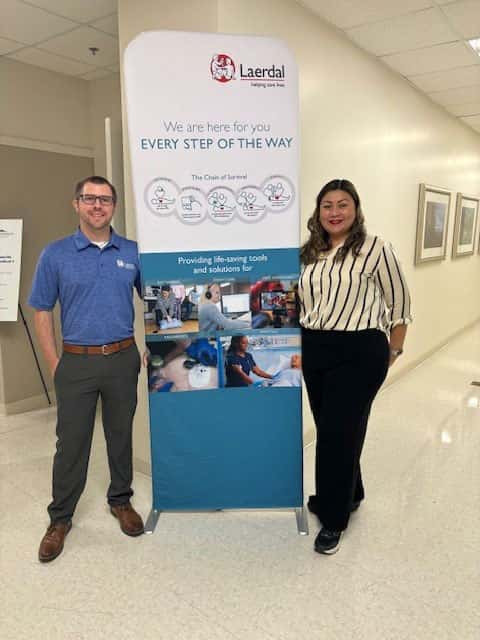
Since holding the open house, two other facilities in the system have adopted high-fidelity simulation as part of their training efforts.
"The event was a huge success and helped Riley become a part of the facility," Jennifer shares. "If I say, 'Riley,' everyone knows who I’m talking about."
"This event was made possible by having a really good working relationship with Brent," she adds.
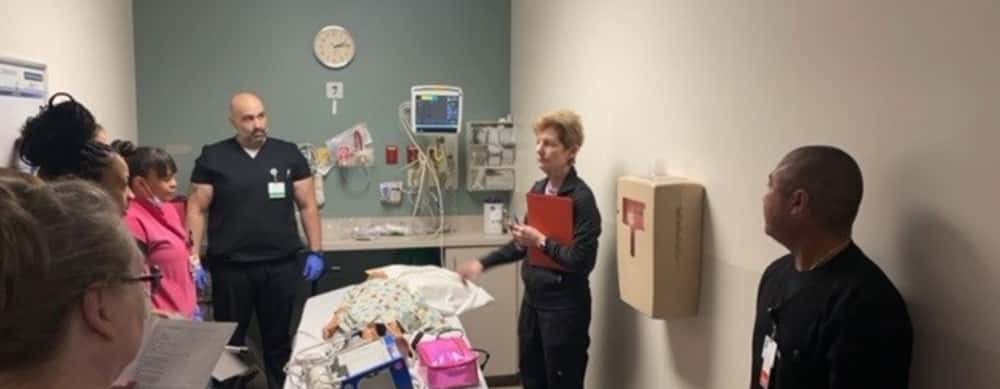
Jennifer is now focusing on training staff in preparation for the opening of Summerlin’s first standalone Emergency Department. She recently ran adult and pediatric mock codes to ensure the team is prepared – before the doors of the new ED even open.
She's also working on advocating for high-fidelity pediatric and NICU training to ensure that providers are prepared to handle these complex and often high-stress environments. "We see the highest acuity NICU patients here in Las Vegas," she explains.
"You think about the future and the needs of the patients and the community," she says. "And you think about the needs of your learner group. And how do you get there? That’s why I push for high fidelity."
Hands-on, tactile training builds confidence and fosters seamless teamwork and communication.
Training in the real-world setting ensures authentic learning experiences while helping uncover latent safety issues.
Simulation data can highlight opportunities for quality improvement, show learners the "why," and boost retention.
If you're interested in using simulation to build preparedness in your organization, Jennifer advises persistence. She continued pushing until she got the support she needed to pursue her simulation goals.
She emphasizes the importance of illustrating the potential of simulation using real-world examples. In her justification letter, she used a real example of a rapid call that had occurred in the parking lot. She pointed out that having high-fidelity simulation would've allowed her to go over this exact scenario before it ever happened in real life.
- Jennifer Inocencio, MSN-Ed, BSN, NPD-BC
Manager, Staff Development at Summerlin Hospital

*Liaw, S. Y., Wu, L. T., Wong, L. F., Soh, S. L. H., Chow, Y. L., Ringsted, C., Lau, T. C., & Lim, W. S. (2019). “Getting everyone on the same page”: Interprofessional team training to develop shared mental models on interprofessional rounds. Journal of General Internal Medicine, 34(12), 2912–2917. https://doi.org/10.1007/s11606-019-05320-z